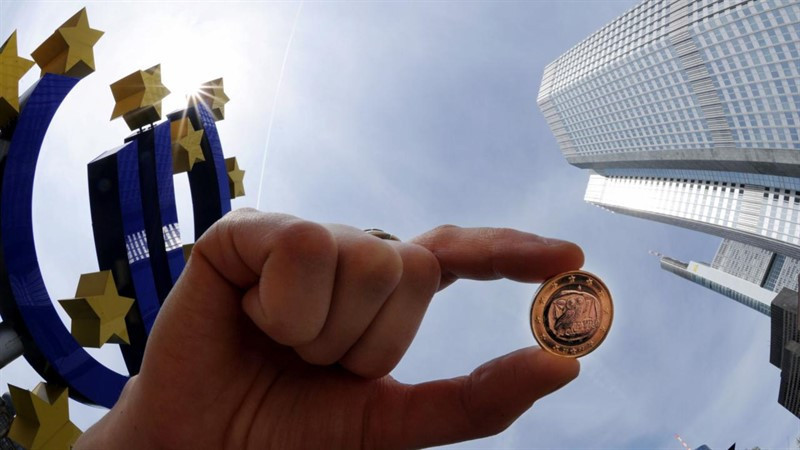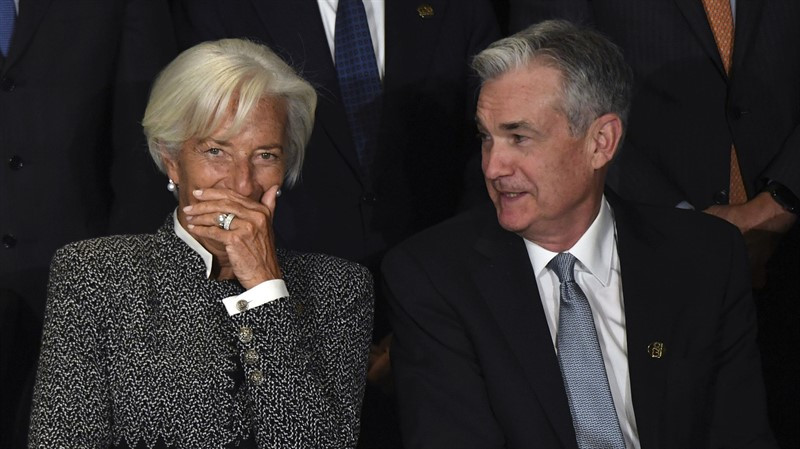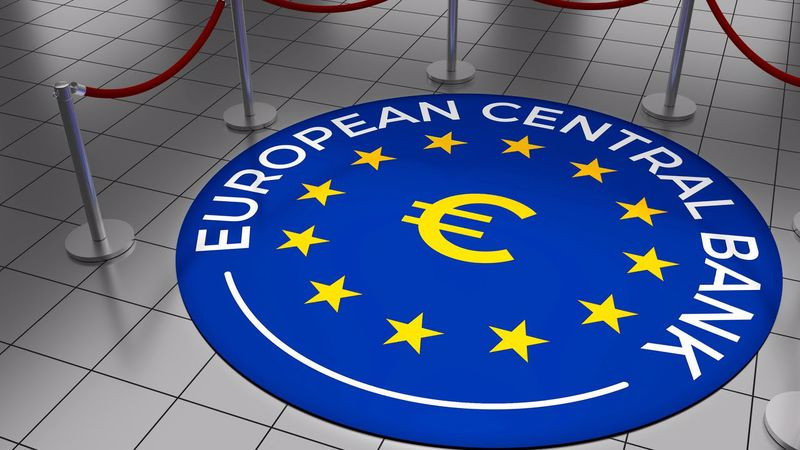
Over the past year, the euro has fallen by almost 15% against the US dollar.
A cocktail of fears about global economic growth, as well as aggressive monetary tightening by the Federal Reserve and weakness in the euro, allowed the greenback to rise to its highest level in about 20 years.
Meanwhile, the conflict in Ukraine that broke out in the immediate vicinity of the EU borders and the bloc's energy problems related to it added fuel to the fire of declining the single currency. This was also facilitated by the fact that the European Central Bank delayed the increase in the key rate until the last moment.
All of this led the euro to break parity with the dollar last week for the first time in two decades.
However, then the single currency was able to rise from its knees and strengthen against its American counterpart by about 2.5%.
Some experts say that the euro has already suffered quite a lot, so it's time for a recovery, and the "bottom" has probably already been reached. Others believe that it is not too late to jump on the EUR/USD bearish train.
On Tuesday, the major currency pair closed for the third consecutive day in positive territory. During this time, it added about 1.4%.
Some relief for the single currency was the easing of fears about the Fed's rate hike by 100 bps at once in July.
According to the CME Group, only 33% of traders are now waiting for such a step from the US central bank.
The reassessment of the ECB's monetary tightening expectations also served as a tailwind for the euro.
The EUR/USD jumped to its highest level in almost two weeks (around 1.0270) after Reuters reported that the ECB will discuss a rate hike of 25 or 50 basis points at a meeting on Thursday.
Politicians have also set their sights on a deal to bail out indebted countries like Italy in bond markets if they adhere to European Commission rules on reform and fiscal discipline, according to the agency.
ECB President Christine Lagarde will redouble efforts to finalize the deal in time for this week's policy meeting.

"Now we are seeing a subtle but significant shift in the outlook for transatlantic monetary policy, and this is good for the euro," Western Union said.
In addition, the euro was supported by the news that Russia is expected to resume deliveries of blue fuel to Germany via the Nord Stream 1 gas pipeline on time on Thursday after the completion of scheduled maintenance, which somewhat reduced fears of an energy crisis by the continent.
Finally, the dollar's decline against its European counterpart was helped by increased risk appetite. This was evidenced by the growth of the US stock market on Tuesday.
At the end of trading on Tuesday, all three key Wall Street indicators showed the highest growth since June 24. In particular, the S&P 500 rose 2.76% to 3936.69 points.
"The US stock market was poised to pick up as the company's quarterly earnings were not as weak as many had feared," Invesco analysts said.
"Revenues exceeded low expectations. As such, we do not see the effects of monetary tightening and inflation impacting earnings as strongly as previously thought," Simplify Asset Management strategists said.
"However, the fundamental picture has not changed much. We still have shrinking revenues, high inflationary pressures, and Fed tightening. So we don't think the stock market rally is sustainable," they added.
US stocks fluctuate between gains and losses on Wednesday, reflecting the cautious mood of the market.
The euro rally fizzled out on the approach to $1.0270, after which it plunged to $1.0180, and then returned to the area above $1.0200.
"Apparently, concerns are growing again about Russian gas supplies to Europe and the possibility of a deep recession there, and this pessimistic mood has again led to an increase in safe-haven assets," economists at Equiti Capital said.
Tracking the deterioration in risk sentiment, the USD index climbed to 106.90 before correcting slightly.
UBP analysts say that the euro is now looking cheap and the dollar is expensive, which implies the possibility of a change in the EUR/USD exchange rate.
In doing so, they point to an ongoing game of waiting with three big risks: a gas shutdown, China's COVID-19 policy, and whether the world can avoid an economic downturn.

China just reported more than 1,000 coronavirus infections for the first time since May 20, and investors are growing concerned that Chinese officials are imposing more restrictive measures.
Citi strategists estimate the chances of a global recession at 50% and expect several major economies to fall into recession over the next 12 to 18 months.
Meanwhile, European Commission President Ursula von der Leyen said on Wednesday that the possibility of a complete shutdown of Russian gas is a very likely scenario.
The International Monetary Fund (IMF) warned of serious damage to the European economy from the Russian gas embargo.
Representatives of the authoritative organization noted that Eastern Europe and Italy are likely to face a serious recession if the countries fail to pool resources. If Russia cuts off gas supplies to Europe, the economies of the Czech Republic, Hungary, Slovakia and Italy could shrink by more than 5%, they added.
The resumption of operation of the Nord Stream 1 gas pipeline after a 10-day shutdown should take place on Thursday. In addition, the ECB will announce its verdict on monetary policy on Thursday. These two events keep the markets in suspense.
"If tomorrow we really see the resumption of Russian gas supplies, this will be good news for the EUR/USD pair, which in the short term may strengthen slightly and move even further away from parity. However, the downtrend still persists. Even a potential hawkish turn by the ECB may not be able to provide sustained support to the pair," Commonwealth Bank of Australia said.
In their opinion, the balance of risks is tilted towards a weaker euro, while the path of least resistance for the US dollar is to continue rising due to the poor outlook for the global economy.
As a result of the next meeting, the ECB will almost certainly raise rates by 25 basis points. The last time the central bank raised rates was in 2011. Its deposit rate has remained negative (-0.5%) since 2014.
At the same time, a more significant increase of 50 bp is not ruled out, especially given the recent weakness of the euro.
In addition, the ECB is set to announce a new anti-fragmentation tool in response to the sharp rise in eurozone government bond yields, which hit the most heavily indebted countries the hardest.
According to some reports, politicians are now weighing whether they should announce the size and duration of the new bond-buying scheme.
The announcement of a large envelope could boost confidence in the ECB's commitment to combating so-called "fragmentation risks", but investor disappointment could follow if the size is too small.
"The more they develop their tool, the less the risk that it will be tested by the markets," UBS economists believe.

"We see four possible outcomes tomorrow, most of which are negative for the euro. The best option for the single currency would be to raise the ECB rate by 50 bps and the announcement of an aggressive anti-crisis tool, and the worst - a rate hike by 25 bps and further delays with this tool," said Brown Brothers Harriman analysts.
"We believe that the best option is unlikely (15%), as well as a 25 bp increase and an aggressive anti-crisis tool (15%). Thus, the worst case scenario (35%) and an increase of 50 bps without a tool (35%) remain the most likely. Although the rate hike by 50 bps may give the euro momentum, the fact that the ECB cannot come up with a reliable anti-crisis tool should ultimately put pressure on the single currency," they noted.
There is no doubt that the ECB is unhappy with the euro's recent weakness - not only against the dollar, but in terms of trade, ING strategists say.
They expect the ECB to raise rates by 25 bps on Thursday and leave room for a 50 bps hike in September.
"However, we suspect that a larger-than-expected rate hike of 50 basis points or more hawkish than anticipated may not provide sufficient support for the euro. This is due to the growing downside risks for the eurozone economy, which in turn is due to the threat of gas supply disruptions in the coming months or winter, and more recently Italy's return to political uncertainty," ING analysts said.
The bank's baseline scenario for the EUR/USD pair is that it may retest parity this week.
"The ECB could potentially be the trigger for this movement. We believe the pair may return to levels above 1.0300 only after the dollar loses some momentum (which will require some stabilization of risk appetite) and the markets feel a little more comfortable with the scale of the economic downturn embedded in European assets." stated in ING.
Ahead of major events, the single currency will struggle to attract bulls as the dollar regains its composure on Wednesday after testing the Fibonacci retracement level of the June-July 50% rally around 106.50 on Tuesday.
The key support for the EUR/USD pair is the level of 1.0220. If the pair closes below this level, it could extend the fall towards 1.0200 and 1.0170.
On the other hand, the level of 1.0270 acts as a strong resistance. A close above this level will open the door to the upside towards 1.0300 and 1.0400.
 English
English 
 Русский
Русский Bahasa Indonesia
Bahasa Indonesia Bahasa Malay
Bahasa Malay ไทย
ไทย Español
Español Deutsch
Deutsch Български
Български Français
Français Tiếng Việt
Tiếng Việt 中文
中文 বাংলা
বাংলা हिन्दी
हिन्दी Čeština
Čeština Українська
Українська Română
Română

